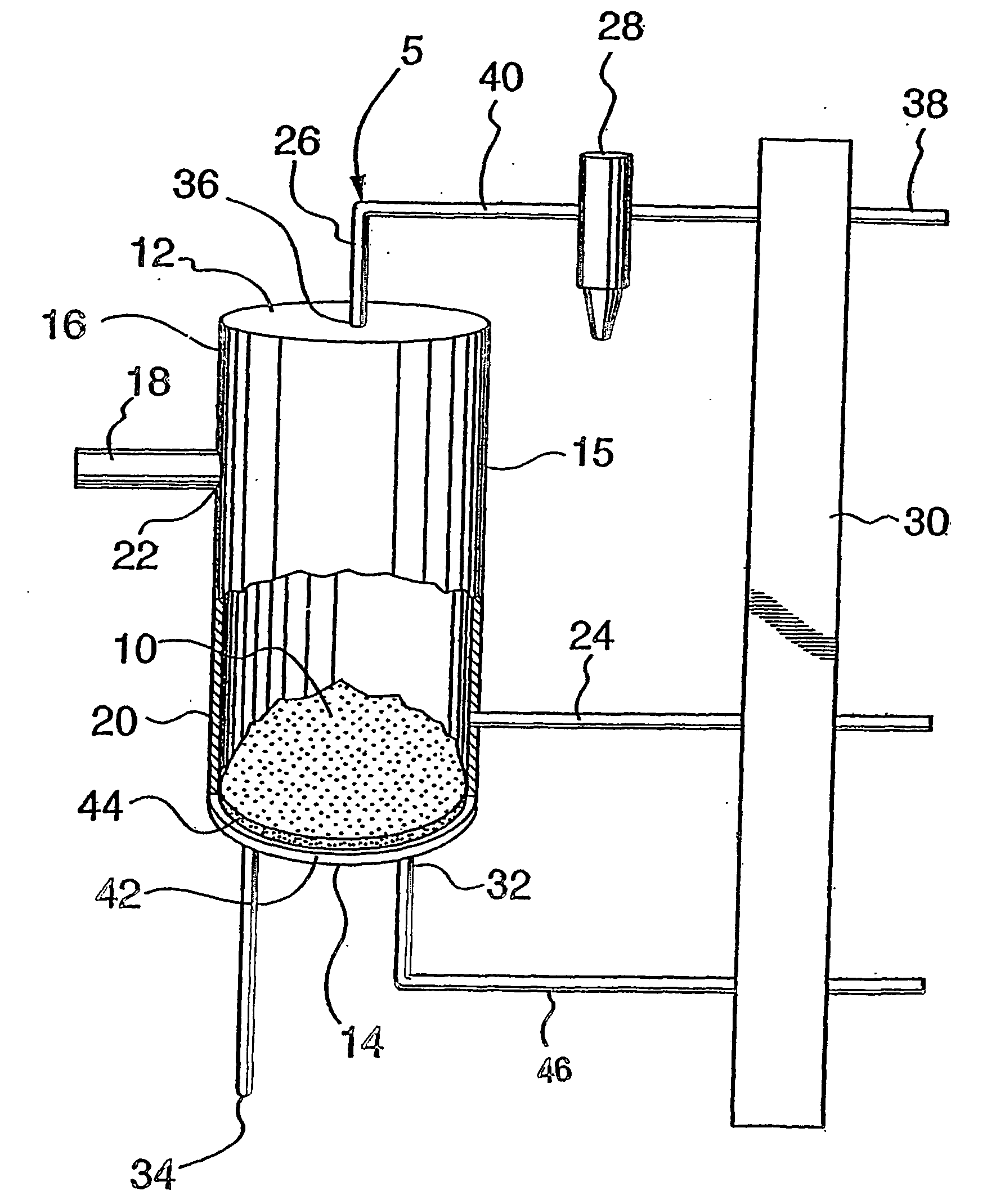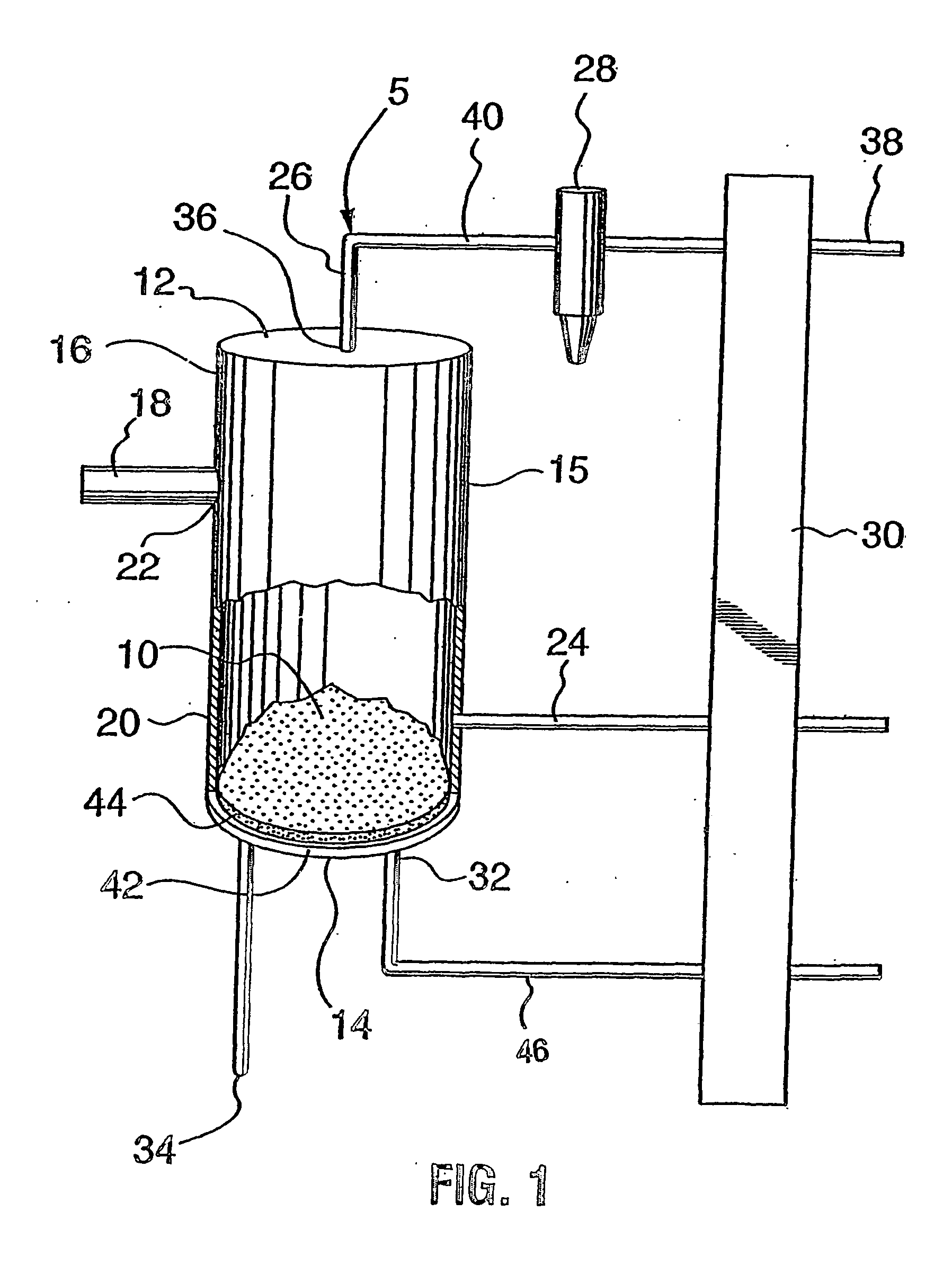Method of reducing unburned carbon levels in coal ash
a carbon level and coal ash technology, applied in the field of carbon level reduction, can solve the problems of incomplete burning of carbon, reduced operating temperature of fossil fuel combustion system, formation of nitrous oxide, etc., and achieve the effect of reducing carbon level in fly ash
- Summary
- Abstract
- Description
- Claims
- Application Information
AI Technical Summary
Benefits of technology
Problems solved by technology
Method used
Image
Examples
example 1
[0046] A sample of 991.2 grams of fly ash, sieved to greater than 106 microns, was heated in a microwave reactor into which atmospheric air was introduced to supply oxygen for carbon combustion. For this experiment, a microwave incident power of between 10 and 15 kW was used. Carbon content of the fly ash sample was measured by LECO™ combustion analysis to be 25.2% organic carbon. Microwave power was applied for approximately 30 minutes. The temperature of the fly ash was continuously monitored using an infra-red pyrometer.
[0047] The fly ash material was observed to heat very rapidly in response to the application of microwave power. Peak temperatures exceeding 600° C. were reached. The material was observed to glow brightly for a short period and then to spontaneously cool down due to carbon depletion. Since carbon is the principle microwave receptive component of the fly ash, the depletion of carbon results in a substantially microwave “transparent” material which is a poor micro...
example 2
[0059] A sample of fly ash from a coal generating station was selected for continuous microwave processing using a fluidized bed reactor vessel with atmospheric air as the fluidizing oxygen input. The fly ash was analyzed for size distribution with 50% passing 20μ.
[0060] Fly ash was fed to (and discharged from) the reactor vessel at the rate of 1.5 lb / min and microwave power was adjusted to maintain a measured bed temperature of 800° C.-850° C. The test was continued at steady state conditions for at least 130 minutes during which substantially all discharge material was collected. The initial ash LOI was measured to be 9%. A total of 13 processed ash samples were analyzed yielding an average LOI of 2.7%.
example 3
[0061] A sample of fly ash was processed as described in Example 2 using a feed (and discharge) rate of 1.4 lb / min and a bed temperature of 825° C. The initial ash LOI was 9%; a total of 10 processed ash samples was analyzed yielding average LOI of 0.6%.
PUM
| Property | Measurement | Unit |
|---|---|---|
| Temperature | aaaaa | aaaaa |
| Temperature | aaaaa | aaaaa |
| Temperature | aaaaa | aaaaa |
Abstract
Description
Claims
Application Information
 Login to View More
Login to View More - R&D
- Intellectual Property
- Life Sciences
- Materials
- Tech Scout
- Unparalleled Data Quality
- Higher Quality Content
- 60% Fewer Hallucinations
Browse by: Latest US Patents, China's latest patents, Technical Efficacy Thesaurus, Application Domain, Technology Topic, Popular Technical Reports.
© 2025 PatSnap. All rights reserved.Legal|Privacy policy|Modern Slavery Act Transparency Statement|Sitemap|About US| Contact US: help@patsnap.com


